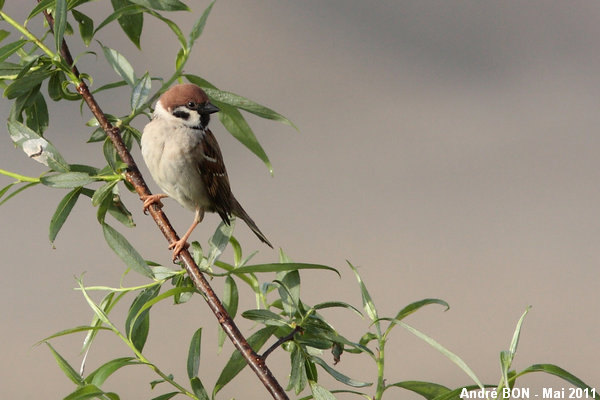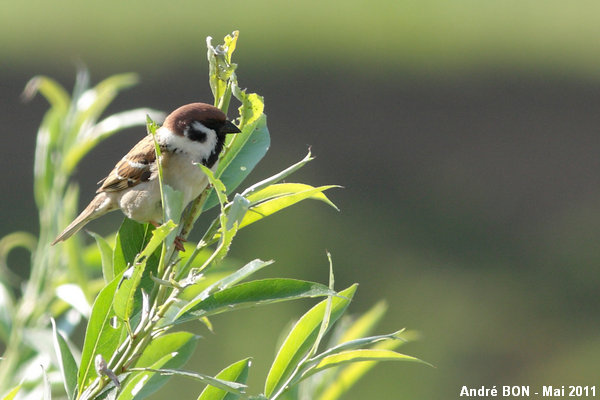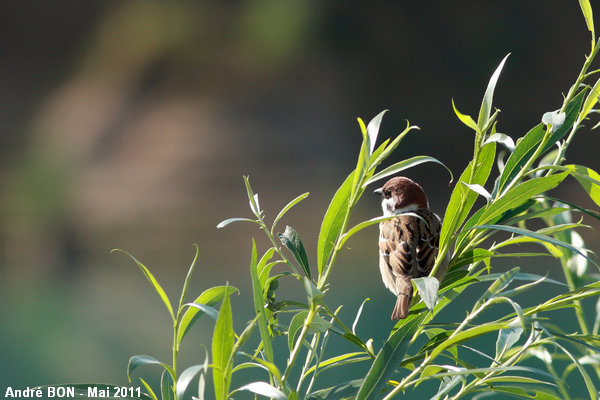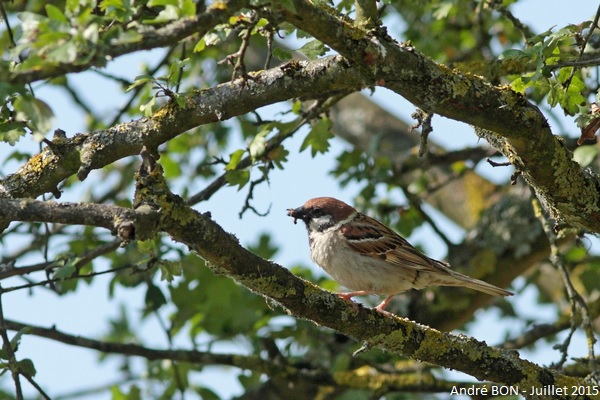




| Eurasian Tree Sparrow (Passer montanus (Linnaeus, 1758)) |





|
|
Scientific name: Passer montanus (Linnaeus, 1758) Common name: Eurasian Tree Sparrow French name: Moineau friquet Order: Passeriformes Family: Passeridae Size: Body size: 12.5 to 14 cm; Weight: 19 to 25 g; Wingspan: 21 cm. Habitat: Open country with isolated copses. Orchards and fallow land. It is almost missing in urban areas and in areas of intensive agriculture. Food: The Eurasian Tree Sparrow mainly feeds on the ground. It feeds on seeds but also on small invertebrates, insects, woodlice, centipedes, millipedes and spiders, especially when feeding the chicks. Nesting: This bird nests in colonies inside cavities, old trees, rock faces or others. The decreasing number of old orchards and other suitable places to nest is one cause of the decline of this species. The nest, built with dry grasses and straw, is lined with feathers. Females lay 5 or 6 eggs late April early May. There can be 3 broods per year. Migration: Sedentary. Northern populations move southwards in winter. Geographic area: Europe and Asia. Introduced to Australia and to the United States. |
You can recognize the Eurasian Tree Sparrow with its rich chestnut crown and the black comma-shaped markings on its white cheeks. The upper side of the body is brown with black longitudinal stripes, the under side is greyish white. There is a narrow white stripe collar and the wings show two white wing bars. There is no sexual dimorphism, males and females are similar. |
| [To know more about the Eurasian Tree Sparrow] [Next picture] [Top] |

|
I have observed these Eurasian Tree Sparrows near a European Bee-eaters colony. I think that they were trying to nest in the old burrows. |
| [To know more about the Eurasian Tree Sparrow] [Next picture] [Previous picture] [Top] |

|
On the contrary of House Sparrows, it is difficult with Eurasian Tree Sparrows to tell males and females apart |
| [To know more about the Eurasian Tree Sparrow] [Next picture] [Previous picture] [Top] |

|
On this picture you can see the narrow white nape collar. It is shortly interrupted at the back of the head. |
| [To know more about the Eurasian Tree Sparrow] [Next picture] [Previous picture] [Top] |

|
Is there still a clutch to feed in the neighbourhood? |
| [To know more about the Eurasian Tree Sparrow] [Previous picture] [Top] |

|
As for previous times, this observation was made near a colony of European Bee-eaters. |